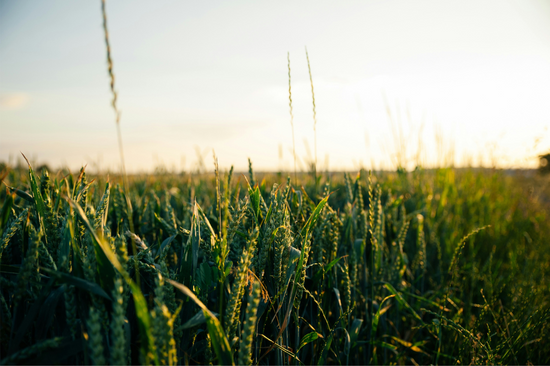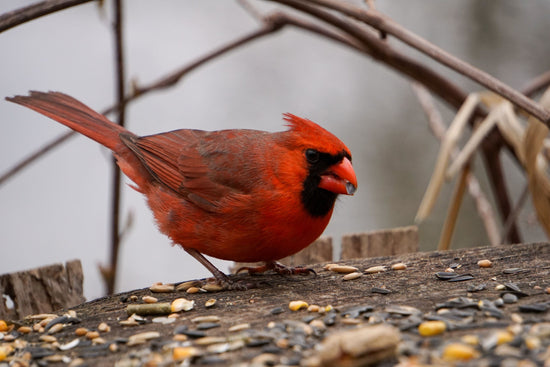When it comes to growing a garden or planting a food plot, it is important to know the basics of fertilization to get the maximum yield out of your intended harvest.
If you have been around gardening for any length of time you have probably heard the acronym NPK before. NPK is the scientific buzzword to measure key ingredients in fertilizer. Here is a short explanation of the breakdown:
N – Stands for Nitrogen. This nutrient is what develops the stem and leaf and adding this will get things growing fast. This is perfect for leafy vegetables.
P – Stands for Phosphorus. This nutrient is valuable for developing flowers and fruit. It also helps roots take quickly to the soil around them. If you have a lack of fruit but lots of leaves and stems, it may be time to boost your Phosphorus.
K -Stands for Potassium. This nutrient promotes healthy root systems and helps the plants resist disease. It also works alongside the Phosphorus in developing fruit.
FERTILIZER TYPES
The two types of fertilizer are complete and incomplete fertilizers. An incomplete fertilizer is a product that does not supply all three of the major nutrients but only supplies one or two. A complete fertilizer is one that does provide all three nutrients (NPK).
Another way to break down fertilizer types is general and special-purpose fertilizers. If the fertilizer contains equal amounts of each major nutrient or has just a slightly higher variation of nitrogen than phosphorus or potassium, then it is a general fertilizer. Special-purpose fertilizers on the other hand are formulated for specific needs. They are used to target the different growing seasons of a plant (Grow, Bloom, Flower).
FERTILIZER INFORMATION
12-12-12 Fertilizer
Triple 12 fertilizer will create a healthy blade, stem and root structure. With stronger roots, you will not need as much water since the vegetation can absorb more moisture. The drawback is you can burn the vegetation if you don't either drench with water or apply in fall or in spring just before a rain. All in all, this is a well balanced fertilizer. A well balanced triple 12 fertilizer is recommended at the time of sodding or seeding to ensure that your new plants get all three essential nutrients.
16-16-16 Fertilizer
Triple 16 fertilizer is a general purpose fertilizer for use on most shrubs, trees, lawns, flowers and vegetables. It contains a fast acting form of nitrogen which plants use, even in cool weather, to help develop a rich green color. This triple 16 fertilizer is especially effective on clay, sand and peat.
19-19-19 Fertilizer
Triple 19 fertilizer is a more acidic fertilizer making its absorption by the leaves more efficient. This fertilizer helps the general growth of crops as well as increases disease resistance. It is suitable for fertigation and foliar application. Triple 19 also prevents deterioration of soil texture. This can be used for variety of crops like fruits, vegetables, cotton, tobacco, sugarcane, tea, oil seeds, pulses, cereals etc.
6-24-24 Fertilizer
This fertilizer is a beneficial supplement for soils low in phosphate and potash. It is also an excellent formulation for use as a pre-plant fertilizer for turf, ornamentals, vegetable gardens or to prepare turf and ornamentals for the stresses of winter. This is best for plants that already give off high amounts of nitrogen such as clovers, legumes, and tomatoes.
46-0-0 Fertilizer (Urea)
Urea is 46% nitrogen, so its analysis is 46-0-0. This actually has carbon in it, so in a sense, you could call it an organic nitrogen. Not that it's approved for organic use, but it does have carbons in with the nitrogen so carbon is part of the molecule of urea. Urea has a tendency to dehydrate the soil, so it has to be used where there is adequate water. In the right place it can be very useful. One of the uses it's really good for is in corn when the equipment requires a dry application of nitrogen. Urea is a dry granular, so it can spread with a fertilizer spreader just fine. It mixes pretty well with phosphorus and potassium products. You do have to be careful mixing it into limestone. Pelletized limestone and urea would not stay in very well together.
0-0-60 Fertilizer (Potash)
Potash is an enriched source of the mineral potassium for balanced leaf and root growth for vegetables, herbs, flowers, and ornamentals. Potash is great for helping plants cope with both winter cold and summer heat and also is great for use in compost. Potash doesn’t move in soil more than an inch so it is important to till it into the root zone of plants. The link between potash and plants is clear in the promotion of bigger fruit and vegetable yields, more abundant flowers and increased plant health.
Pelletized Lime
The benefits of applying a lime soil amendment are a result of lime’s ability to correct soil acidity. Lime applications neutralize the acidity of the soil, allowing plants to absorb previously locked up nutrients. Consequently, a better soil environment is created, allowing plants to yield optimal results.
WRAPPING UP
So as we can see there are many types of fertilizers that serve different purposes depending on the nutrient requirements needed based on the NPK system. It is important to know your soil as well as what certain plants are lacking to either compensate with fertilizer, or plant strategically so one plant will give to the other the necessary nutrients. A further study of the uses of the three common nutrients, Nitrogen, Phosphorus, and Potassium, will help you understand the best way to fertilize your garden.
Read more about how to choose the right fertilizer here.





